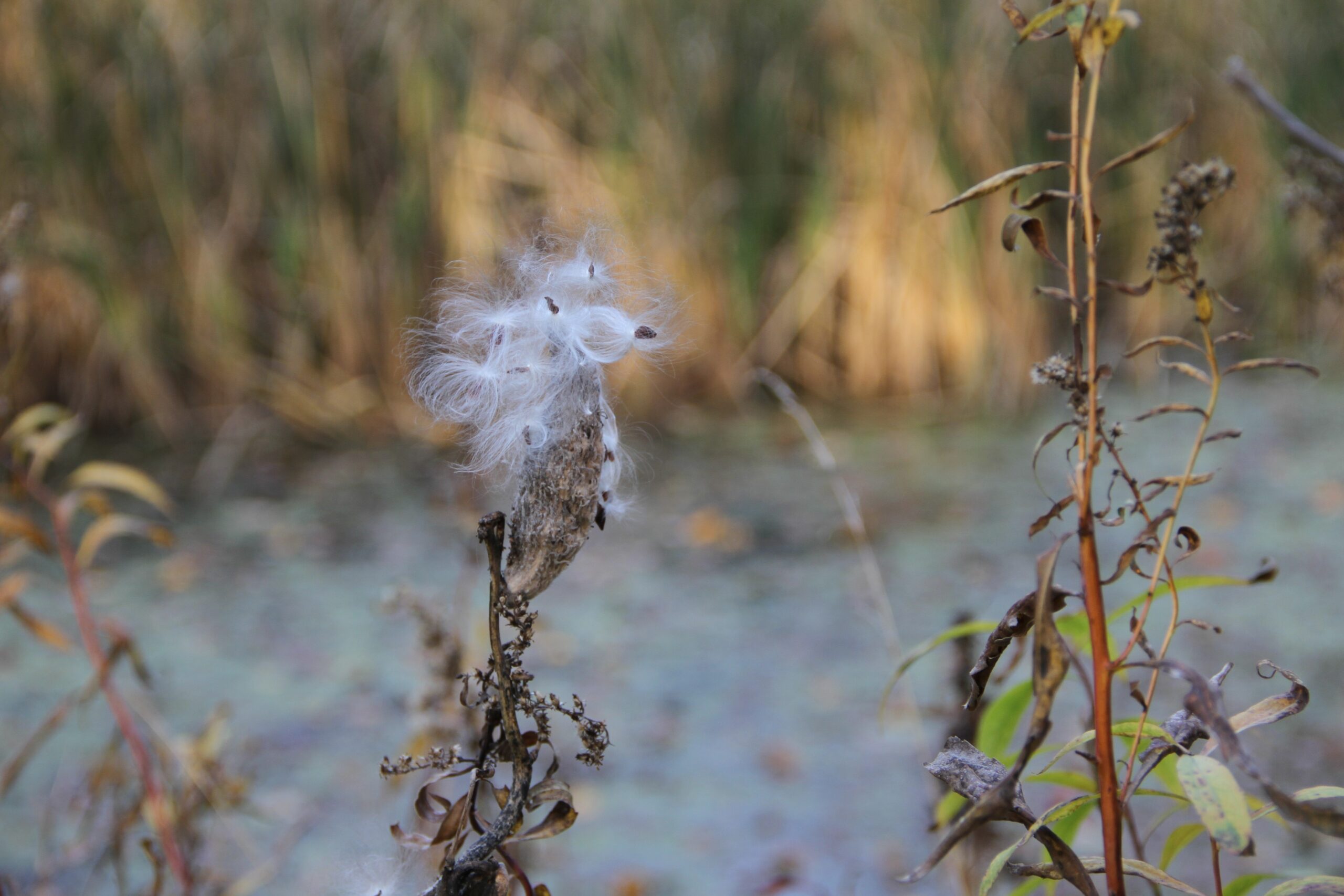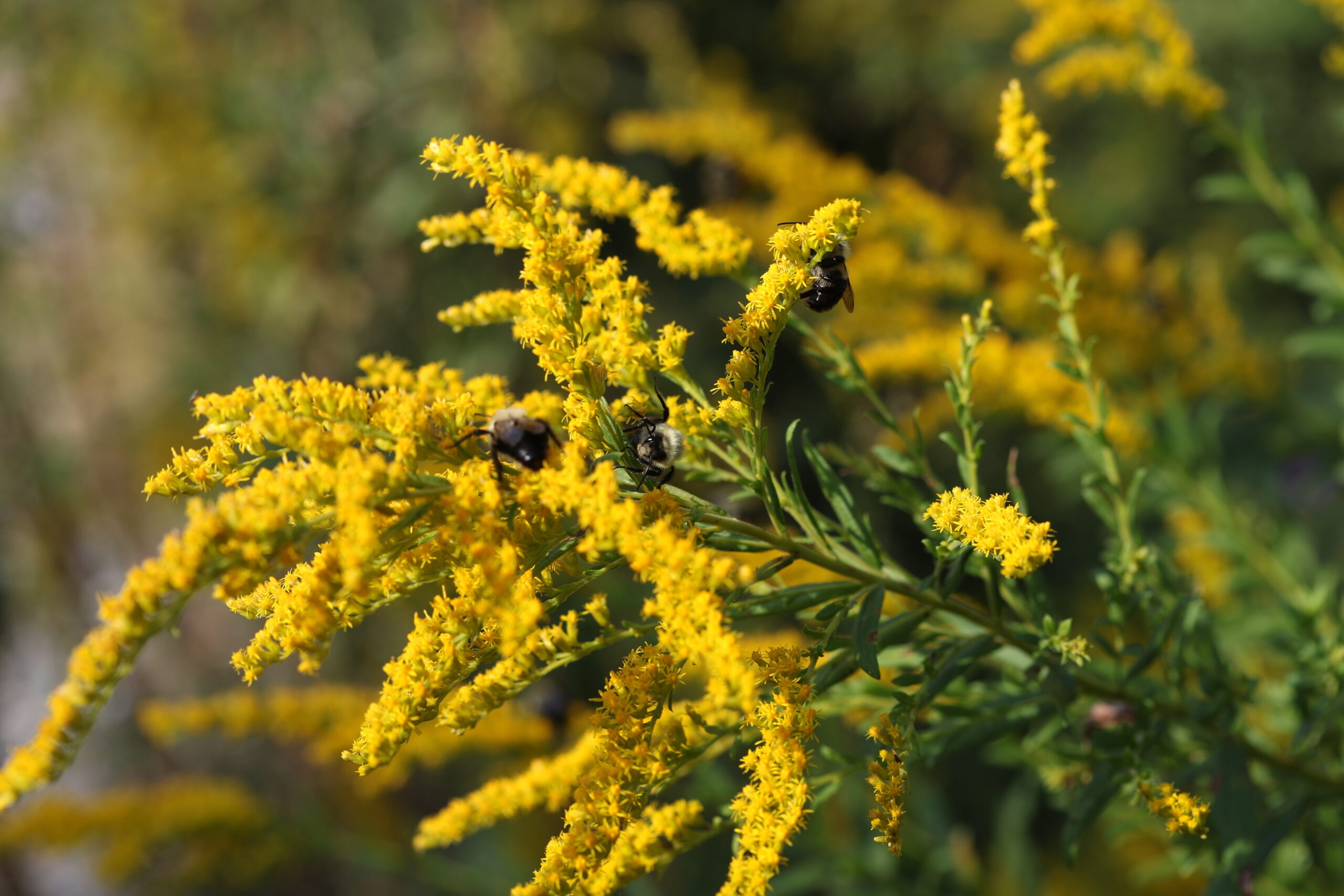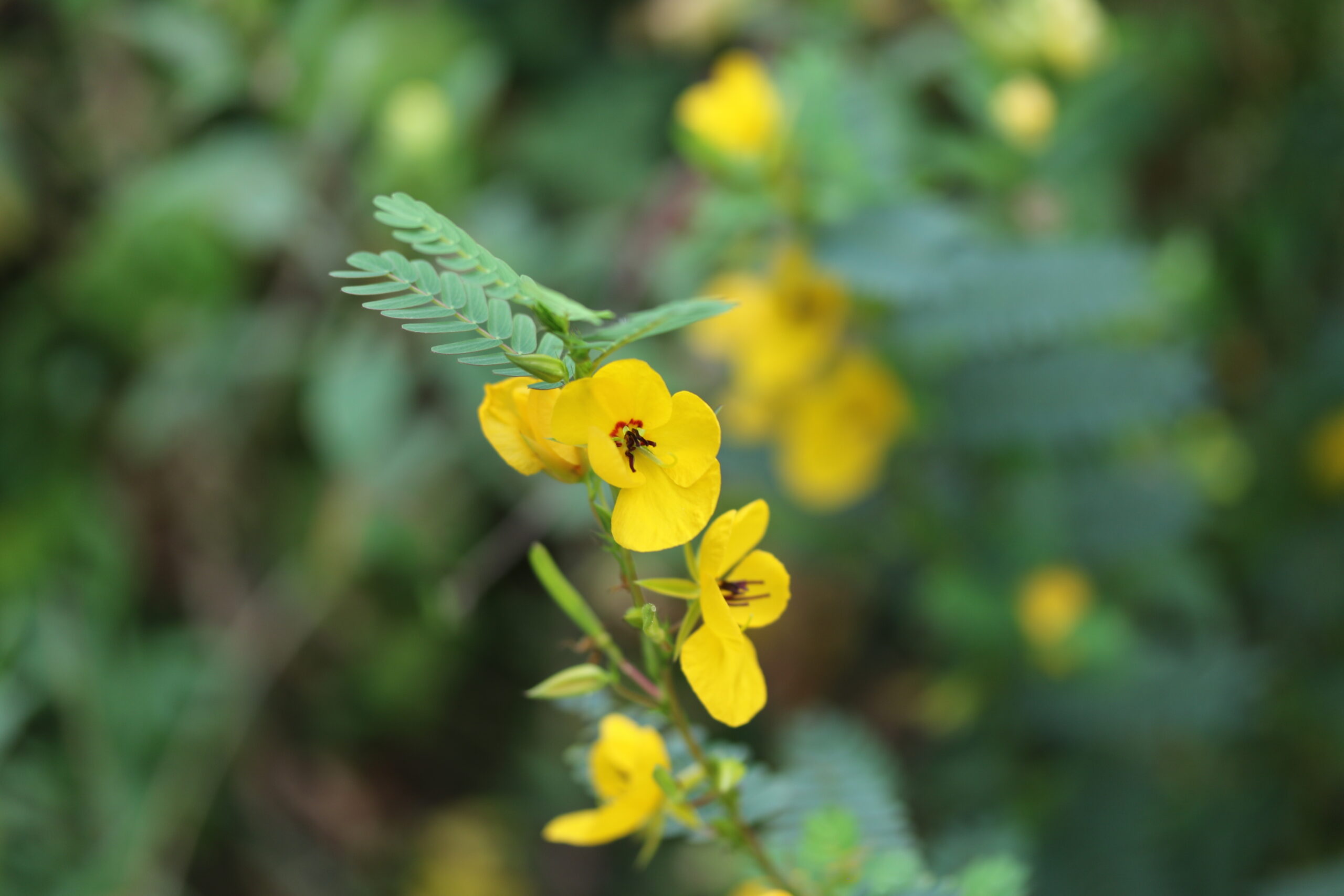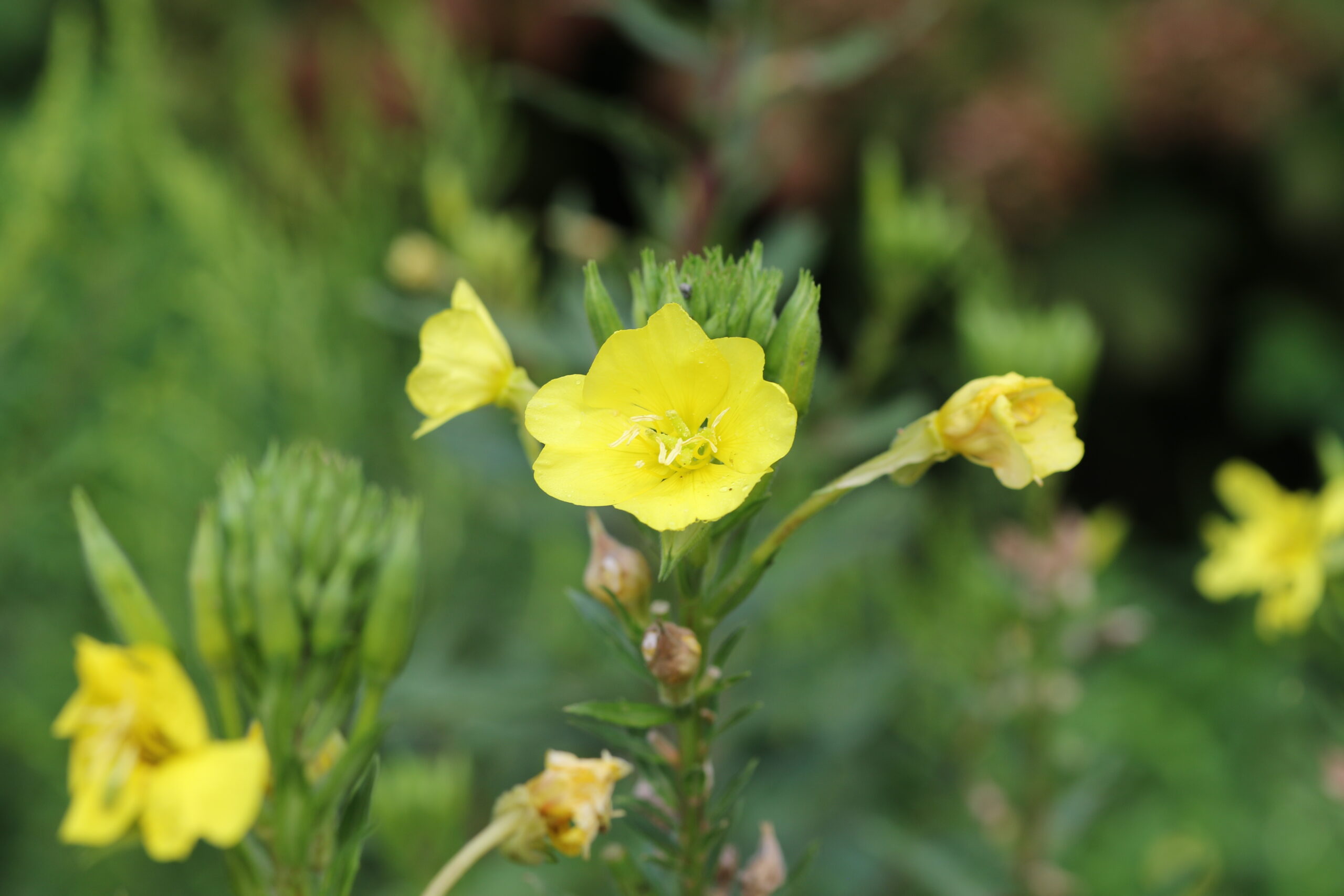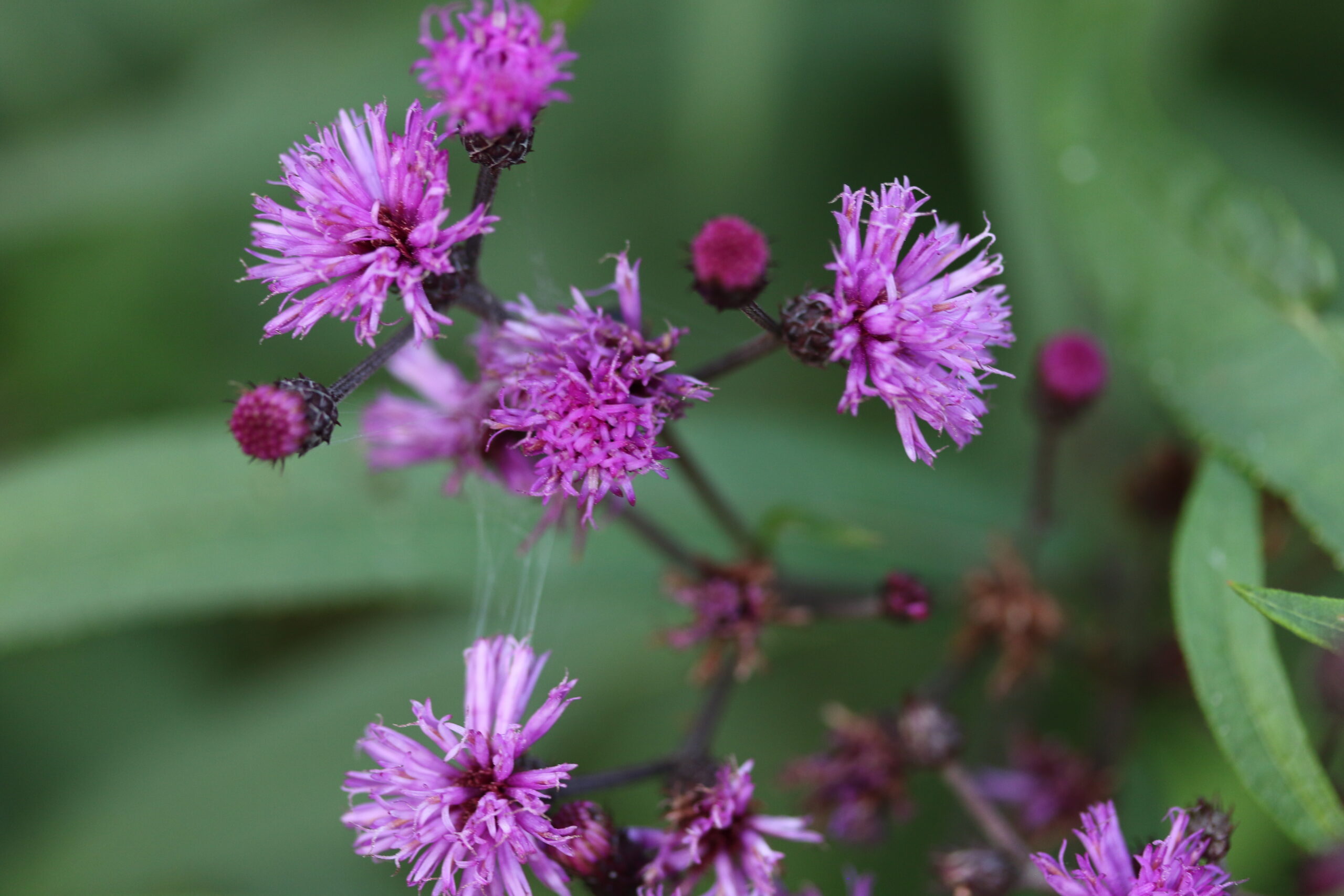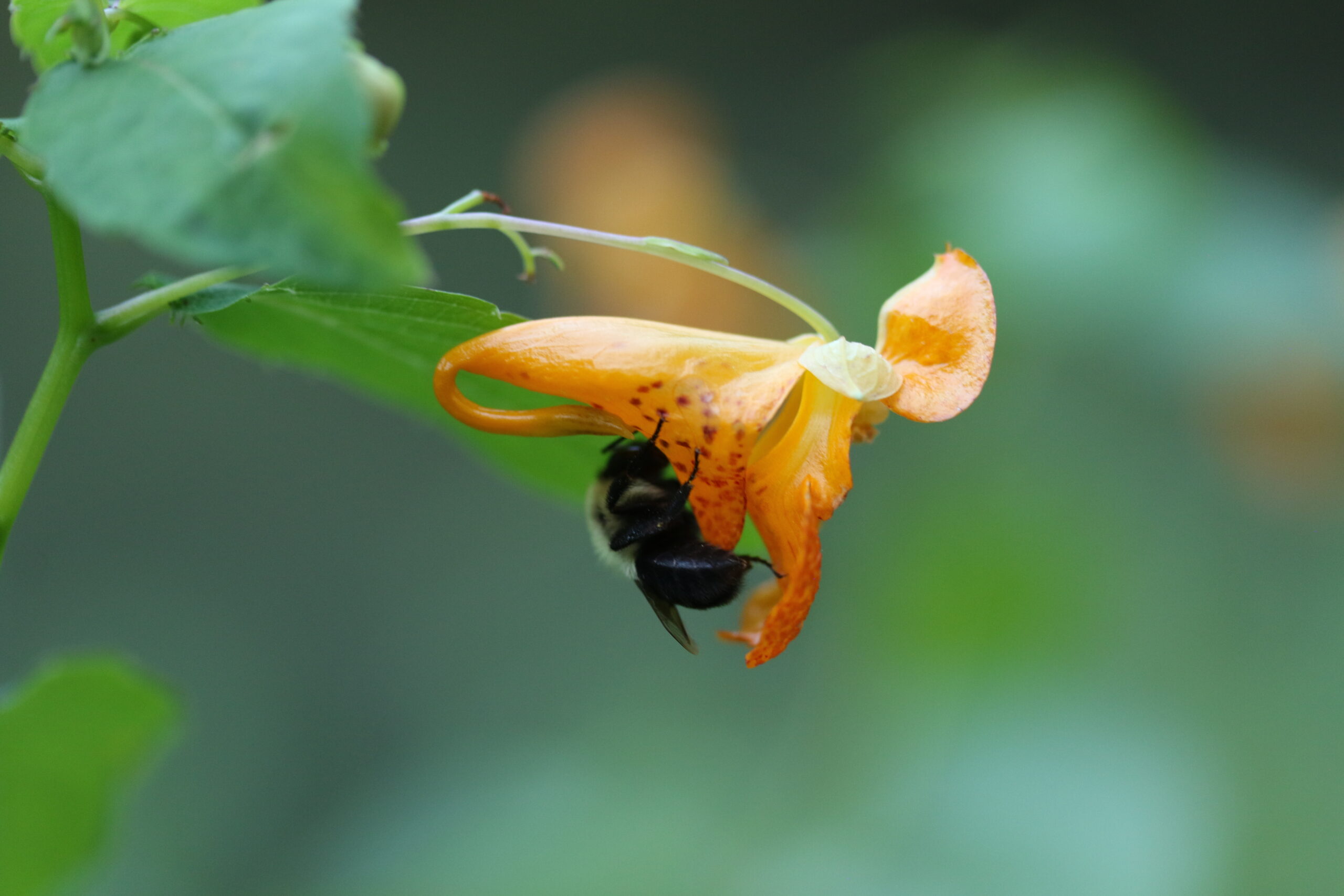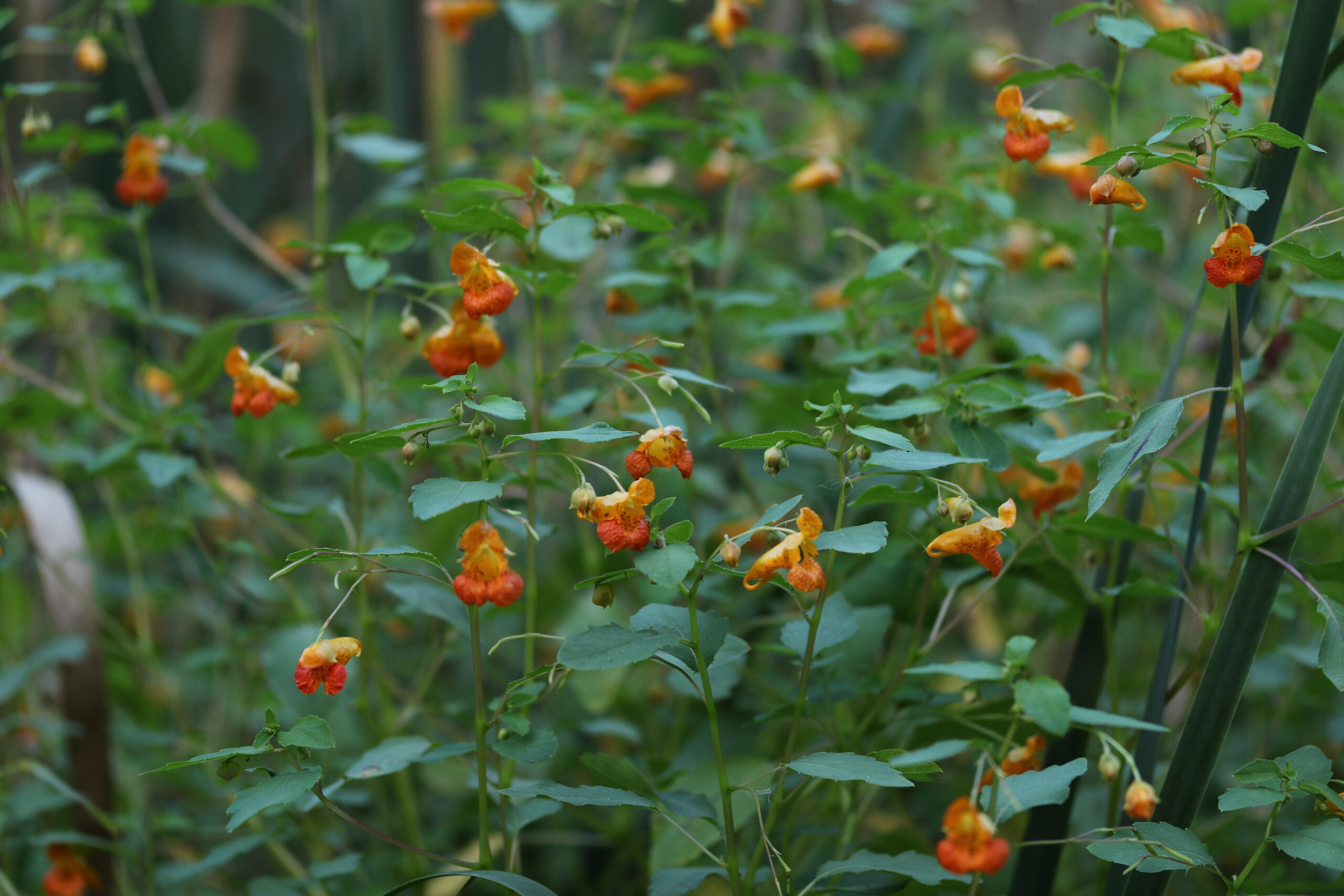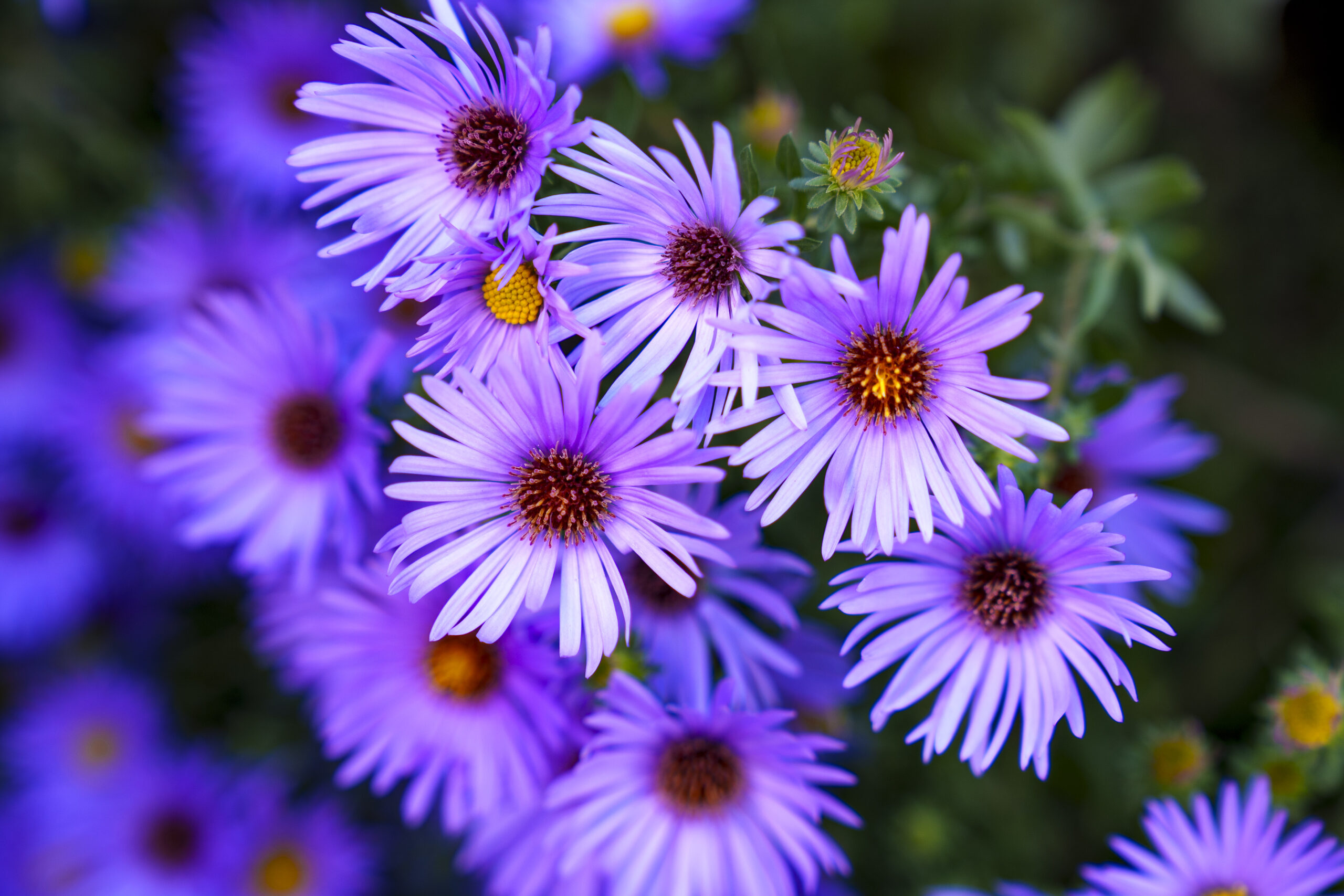By Keith Williams, Vice President of Engagement & Education
Spring gets all the interest when it comes to wildflowers. Fall just doesn’t seem to hold up against spring ephemerals. Spring is a season of renewal and rebirth and these flowers, besides being beautiful, signify hope to many. We are coming out of the dark season, out of the cold. The snow is gone, the days are longer, and these flowers erupt from the last year’s fallen leaf litter in yellows, pinks, reds, whites, and purples.
Fall wildflowers don’t get much love, maybe because autumn signifies the beginning of the end, when the days grow shorter and temperatures get colder. But there is just as much beauty and hope in autumn as in spring, and maybe even more so depending on our view. The miracle of fall transcends its beauty and has to do with relationships, interconnectedness, and legacy.
One of those relationships we see this time of year is that between monarchs, native wildflowers, and milkweed. If you snap a milkweed leaf or stem, a sticky white sap leaks out. This is part of the plant’s defense against being eaten. It gums up the jaws of most herbivorous insects, and it contains chemicals called alkaloids that protect milkweed from most other herbivores and happen to make birds sick. Monarch caterpillars not only evolved a way to tolerate alkaloids, but they also figured out how to accumulate the chemicals in their bodies to make them toxic to birds. This is why monarch adults are bright orange – they are advertising to predators that they are toxic. This relationship is so specific that monarch caterpillars can only survive on milkweed.
In mid fall, in our part of the world, the fourth-generation monarchs are becoming adults. This generation will fly all the way to the mountains of central Mexico where they will overwinter in montane forests. In March they fly north to about the Texas line, where they stop, have babies (who depend on milkweed), and die. Generation 1 continues further north for a way, stops, has babies, and dies. Generation 2 continues the trek, stops, has generation 3, and dies. Generation 3 arrives in our fields and native gardens and has generation 4, who by this point of fall next year will have just finished metamorphosing from caterpillars to winged adults and will head south on a nonstop flight back to Mexico.
While monarch caterpillars can only survive on milkweed, the adults need to get nectar from several different plants. Plants produce nectar to attract insects, and they need insects to move pollen from one plant to another. Pollinated flowers become seeds, so pollination – by species like monarchs – ensures that the plants can produce the next generation of their species. There is a lot riding on effective pollination. Some plants produce an intense color palette this time of year with brilliant yellows, oranges, purples, and blues – colors that are all part of the strategy to attract the right pollinator.
Goldenrods are some of the most obvious and dominant flowers in the landscape. They flood our fields, meadows, and gardens with color. There are 30 native species of goldenrod in Pennsylvania, 75 in North America. Besides the golden glow they give grassland ecosystems, they are also critically important for a variety of pollinators in addition to monarchs. Bumblebees and blue scoliid wasps especially love goldenrod, and I often see clusters of the fuzzy common eastern bumbles nectaring among several blue scoliid wasps with their brilliant metallic indigo wings accented by two yellow dots on their upper abdomen. These are also known as digger wasps since they dig into the soil to lay eggs in beetle grubs including Japanese beetles, and so are formidable biological control agents – another benefit of putting native plants back into our landscape.
Embedded within the stand of goldenrod, is partridge pea with its brilliant yellow leafy blooms that show just a thin ribbon of red in the center surrounding squiggly dark maroon stamens – male reproductive parts in the plant world that produce pollen. Once again, their beauty is an enticement to get pollinated.
Evening primrose flowers form spikes of creamy chiffon yellow cones. If you look closely in the mornings, you may see the pink-banded wings of primrose moths sticking out of the flower tubes. Patches of frothy blue interrupt the yellow of the goldenrod, primrose, and pea. Blue mist flowers form solid patches below the sea of yellow. A tall New York ironweed plant stands as large as the 5-foot-tall goldenrod. The purple is so deep and intense it almost looks black against the yellow. Silver-spotted skippers and long-horned bees suck nectar from the frilly flowers and are covered in the white pollen as a result.
Jewelweed’s deep orange and brilliant yellow trumpet flowers dangle against the green paddle leaves. Named for how water beads up on the hydrophobic leaves and glistens in the sun like jewels, it’s also called touch-me-not for the seed pods that are produced after flowers are pollinated. They explode when touched, dispersing their seed. These plants are smart and put their nectar to entice pollinators deep in the end of the dangling trumpet flowers, which guarantees pollen transfer. No free rides here. It’s a lot of work, if you’re a chubby bumble, to wriggle into the trumpet flower of the jewelweed to get your nectar reward, all the while just getting coated in the flower’s pollen. So it’s no wonder some circumvent the plant’s efforts by chewing a hole through the end of the tube. I’m sure that over time jewelweed will respond with another strategy to ensure their pollination. Adaptation and evolution are a constant dance between plants and insects. They’ve been at this for 33 million years.
The piercing purple blue of New England asters seems to glow from amongst the other plants. The yellow stamen centers contrast with the deep purple flower petal rays. White wood asters are much smaller in contrast, both in size and color prominence, with tiny white blooms on foot-tall plants. But they aren’t small in importance, and their tiny flowers are covered in hungry pollinators – assorted bees and skippers – scrambling to gain the last few calories of nourishment before it gets too cold.
Things change fast at this time of year. One day the forest canopy is green, the next it’s yellow and orange, and the day after that it’s on the ground. Flowers progress quickly, too, and meadows vibrant and so alive with color soon become drab, the color all drained and the insects gone with the onset of the first frost. Does all the energy and exuberance and all the effort put into pollination come down to this anti-climactic end, this dried-up shriveled brown non-descript unattractive seed head?
The fall wildflowers have crescendoed but haven’t lost their role. Their most important purpose starts now, later in life. All that energy and creativity they invested in enticing pollinators to visit their flowers, ensuring pollination, has resulted in grey and brown seeds: the next generation of plants, waiting for the right breeze or animal to come by to transport them to where they will sprout roots and grow and carry on the work started by their parents. This is the culmination of all that energy invested into beauty designed to attract pollinators – the next generation. The greys and browns of our fields, meadows, and native gardens are not hushed from what they were a month ago, but rather are bursting with life encased in seeds.
I met an older man at the Climbers Run Nature Preserve last week. He was instrumental in acquiring this 115-acre gem and invested untold energy in the rehabilitation of the barn and house on the property, the places I now live and work. I enjoy the fruits of his labor today and am forever grateful. I hope my successors can say the same about me. What seeds am I leaving behind, the results of my expended energy? Will they make the world a better place for generations to come? We have limited time and energy, and I hope the seeds I am developing are good ones.
A milkweed seed on white silken gossamer threads wafts in the wind, shakes loose from the split-open grey elliptical pod, and catches a breeze. Its feathery parachute glistens in the sun as the seed gains altitude until, finally, it’s out of sight. I hope it lands in a favorable spot, lays down roots, and grows a strong tall milkweed. So do the monarchs.
